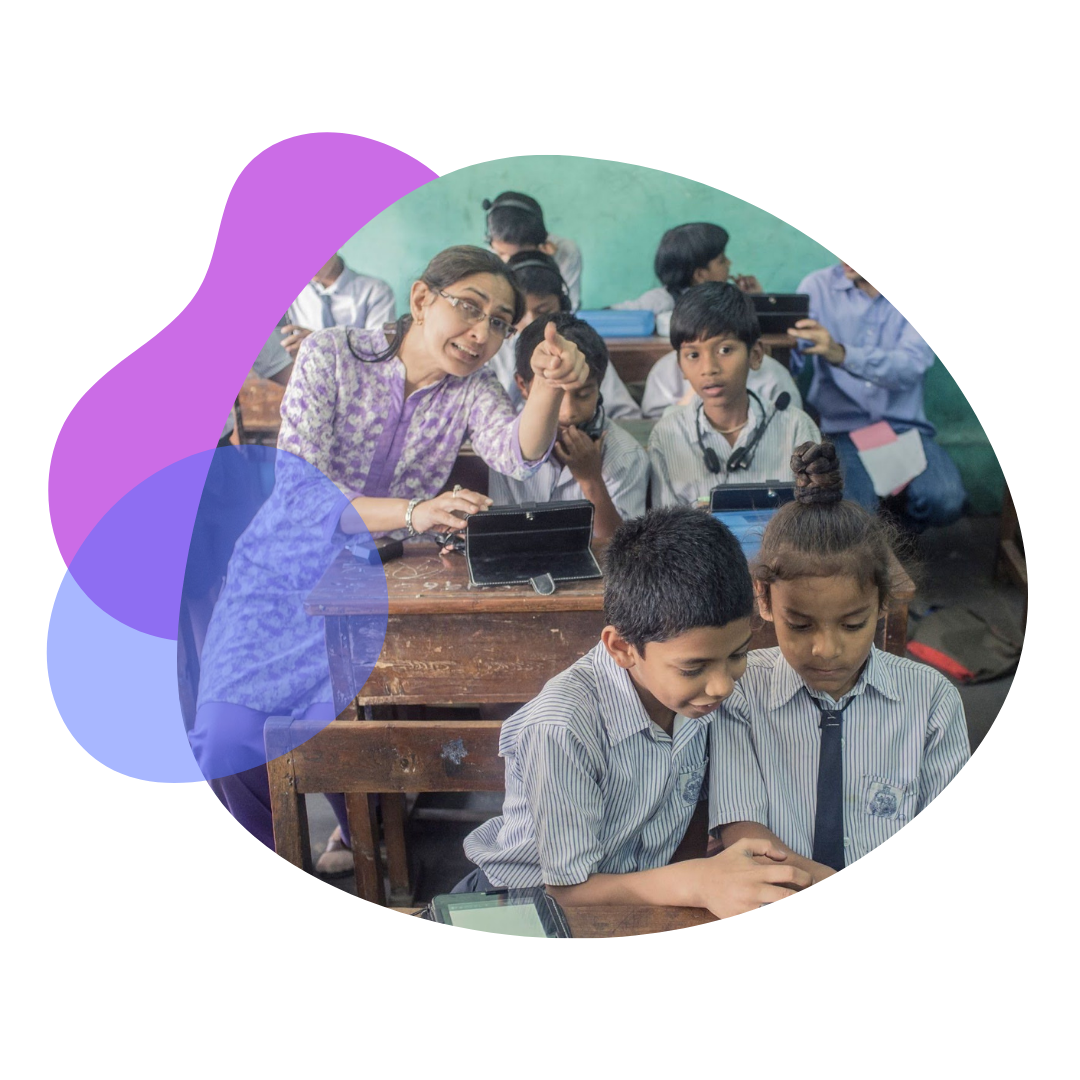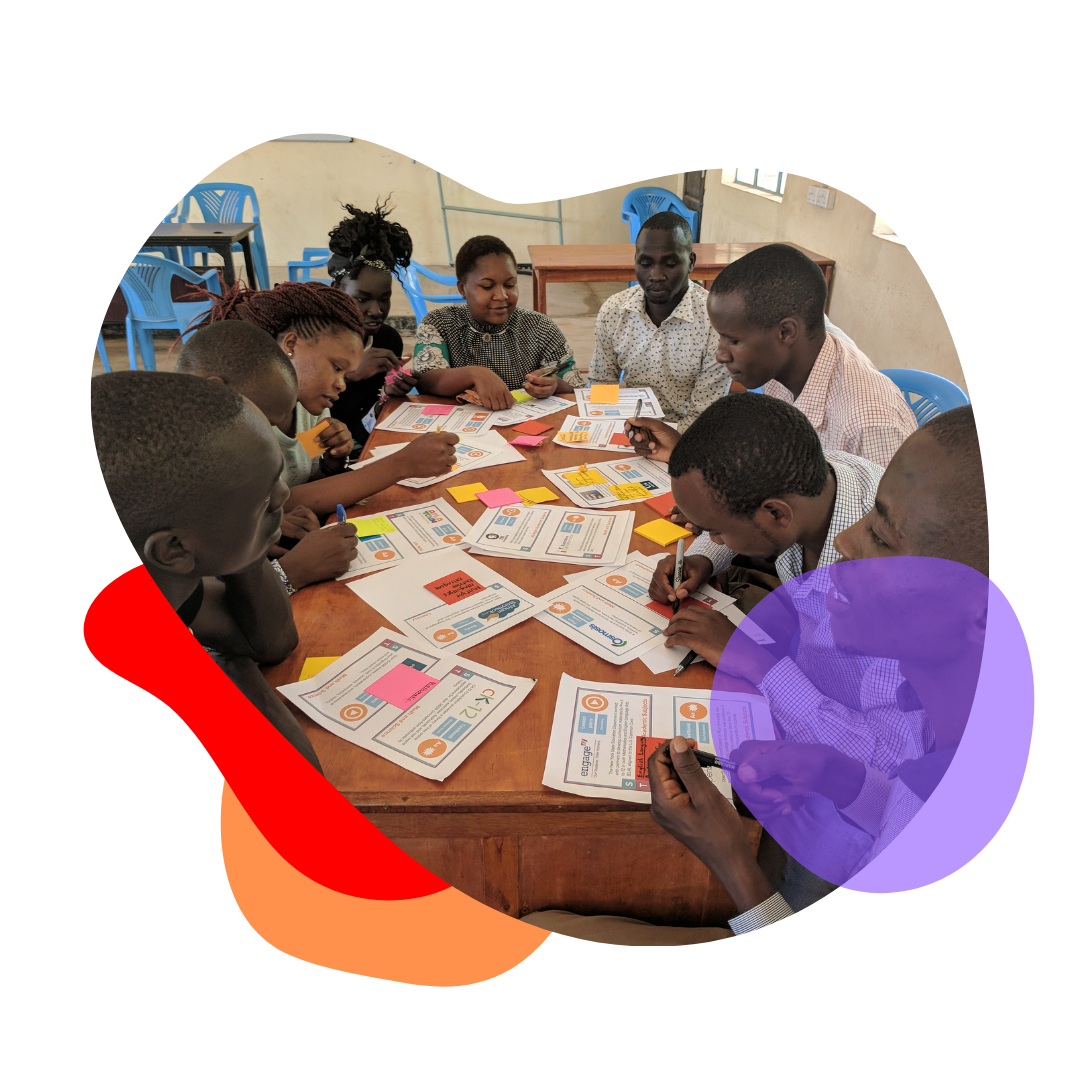Kolibri is an ecosystem of open digital products and tools centered around an offline-first learning platform.
It is especially designed to enable quality teaching and learning with tech but without the Internet.
How Kolibri works for...

Learners
Learners, on their own or guided by their teacher, explore a vast library of resources at their own pace, receiving instant feedback on assessments on their devices at school and at home.
When at school, learners use a tablet or computer to connect to the Kolibri classroom server. At their own pace, they work through the differentiated lessons and quizzes created for them by their teacher, from the wide range of self-directed learning resources in the Kolibri Library, which contains educational materials in over 173 languages, covering a diverse set of K-12 subject areas, including STEM, public health, Internet safety, teacher professional development, coding, and life skills.
When learners engage with exercises and quizzes, Kolibri gives them immediate feedback, and the teacher can track their progress in real time, and give support as needed. When learners have completed their assigned materials, they can use a range of search criteria to continue learning, and are provided with suggestions for what to learn next.
Learners can also be assigned homework, complete their lessons at home using the Kolibri Android App, and when they return to school, they can sync their work to the classroom server, so that the teacher can review it.
Educators
Using Kolibri, educators can easily assign resources, create assessments and lessons for an individual or group of learners in their classes. Once they assign the materials, they can receive instant feedback as learners make progress.
Before class, educators review the topic that will be taught using Kolibri. They search through the pre-selected content available on the topic and choose resources to assign in a lesson and quiz.
During the class, as learners are engaging with the materials, educators use their coach dashboard to see progress real-time as learners are progressing through the materials.
After the class, they use the coach reports to see sets of learner data, including progress through lessons, individual and group quiz scores, as well as time spent on materials.
Educators can then use the data to identify learners that need support as well as plan future assignments and possible groupings of learners for differentiated instruction. If learners have tablets that they bring to school, educators can sync the new lessons and quizzes to the tablets for completion as homework, then review progress on the assignments when learners return to school the next day.


Program Administrators
The Kolibri Edtech Toolkit enables training of educators in blended learning in diverse educational settings. Program administrators monitor progress and analyze data across schools, using both the Kolibri Learning Platform and Kolibri Data Portal for insights and to identify promising practices.
Program administrators kickstart a digital learning initiative using Kolibri with the Kolibri Edtech Toolkit, which provides guidance and materials to train trainers and teachers on blended learning practices with Kolibri, and understand how to implement and support hybrid, project-based, and differentiated learning with Kolibri in a variety of formal, informal and non-formal learning settings.
Once the initiative is up and running, program administrators conduct monitoring on individual schools using data export tools in the Kolibri Learning Platform, exporting learner progress data and voluntarily submitted learner demographic data. These data exports are further analyzed using external tools, to track usage and update.
Program administrators monitor entire initiatives across many schools, using data visualizations and data exports within the Kolibri Data Portal, with an ‘at a glance’ overview of all the data collected across multiple installations of Kolibri, monitoring overall progress of their program, understand where to intervene, and identifying bright spots of implementation to help spread promising practices.
Content and Curriculum Specialists
Kolibri Studio enables curriculum experts to tailor open educational resources to curriculum standards, uploading custom content for diverse learning needs, and creating assessments, all for use in the offline Kolibri Learning Platform.
Supporting these classroom teachers, curriculum designers and content creators use Kolibri Studio to align open educational resources from the Kolibri Library to curriculum standards, pulling resources from multiple content creators in the Kolibri Library to create an aligned sequence of learning resources, with supplemental and remedial materials to support a range of learning readiness.
This allows teachers to more easily and quickly use digital resources to teach their curriculum. When additional resources are required, they can create their own assessments, upload locally produced audio, video, documents, and custom interactive apps or choose materials from the Kolibri Library for remixing and reorganizing according to their needs. These custom ‘channels’ are then imported into the Kolibri Learning Platform by program administrators for offline use.

Frequently asked questions
The best way to understand what resources and tools you may need to integrate Kolibri into your educational program is via the Kolibri Wizard. Answer a few simple questions about your needs and preferences, and the Wizard will provide the exact materials to guide your implementation.
Downloading Kolibri will give you the best sense of what it will look like with your own materials but you can also get a feel for it with the Kolibri online demo site. On it, you can test out the three user account types (learner, coach and admin), and explore a small sample of materials from the Kolibri Library.
Kolibri is open source and available to download directly from our download page. After downloading the platform, you can import resources from our Kolibri Library, upload your own resources or create your own channels using the online curricular tool, Kolibri Studio (see more information below) and have them imported into Kolibri.
After the content has been initially downloaded, it can be distributed completely offline via peer-to-peer or on an external storage device, such as an USB drive.
We also recommend taking a look at our full set of documentation to learn more about installation and using Kolibri.
When installed onto a server, Kolibri can be used with a variety of low-cost and legacy devices and operating systems, and it can also be accessed on a variety of client devices over a local area network (without the internet). Take a look at our hardware guide for a sense of what technical components are needed for set-up and configuration, as well as a list of some possible device types here.
The Kolibri Android App can be used with any Android device using version 6 or newer.
Yes! Our Community Forum is a place where you can get support, ideas and feedback directly from those who use our products and tools, as well as share stories, get to know one another, and stay in the loop with our releases and updates. Access it here: https://community.learningequality.org/
Our approach to designing is open, transparent, community-based, and needs driven.
In order to ensure that our open products truly meet needs across a diverse range of global contexts, we balance many factors: equity concerns, feedback from our community, educational research, our organizational vision, and technical constraints. To identify the best path forward, we are guided by a set of four core design principles: equitable access, effective learning, community ownership and consistent experiences. Aside from these, we also collaborate directly with members of the communities we serve through a tight feedback loop that helps us understand, refine, and design with their needs in mind.
Our Kolibri EdTech Toolkit supports facilitators in integrating Kolibri in learning environments by providing resources for do-it-yourself implementation, including hardware suggestions, training materials (for a “training of trainers” scaffolded model), teacher resources, blended learning strategies, and more.
Our approach is unique in that we aim to assemble a library of resources which supports the diversity of needs Kolibri is designed to meet, rather than collecting all possible open educational resources.
To inform what we select, the Learning Equality team is continually maintaining our awareness of openly licensed digital resources available in the educational landscape. Most of our resources come from an organization, institution, or creator with learning design experience and an educational mandate. We prioritize providing a diversity of grade levels, subject areas and languages. Where possible, we also evaluate and seek input on the degree to which the materials may be suitable for the unique blended learning settings in which we work.
That is done via our online curricular tool, Kolibri Studio. You can learn more about getting started on Studio, along with additional guidance for curriculum alignment, by accessing our Kolibri Studio training toolkit, which has tutorials on how to use the tool, reflection questions to consider to help you make best use of it, and more.
All support-related inquiries are responded to via the Community Forum by members of our team and sometimes even members of our community, who have gone through the same experiences and have valuable insights to share.
Since Kolibri is implemented in a wide range of settings and through different implementation models, there are different ways in which Kolibri has proved effective, depending on context. For example, in some blended learning programs, Kolibri has shown statistically significant improvements in:
- Foundational literacy and numeracy (FLN) and social-emotional learning (SEL)
- Secondary Math and Physics pass rates
- Dropout rates (with up to 97% re enrollment rates for previously out-of-school learners).
Furthermore, Kolibri has enhanced teachers’ digital literacy skills, attitudes about blended learning and SEL, boosting confidence in using educational technology.
All support-related inquiries are responded to via the Community Forum by members of our team and sometimes even members of our community, who have gone through the same experiences and have valuable insights to share.
You can stay in the loop about our community, global programs, Kolibri, new features, new content sources, events and more, by subscribing for updates here.
For all other questions and inquiries, please reach out through our contact form and someone will be in touch with you shortly.